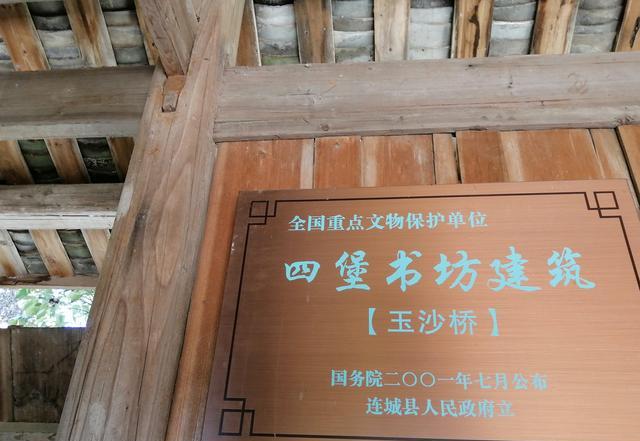Early in the morning of October 6, I took a bus to the town of Sibao.
It only took half an hour or so to arrive.
When I was about to leave the city, I saw the railway station that had just been built and opened to traffic in Liancheng County, Guanzhishan Station.
Previously, there was already a railway station in Liancheng, called Guanzhishan South Railway Station, which was located in Pengkou Town. Today, the new railway station is in the county seat, which greatly facilitates people to and from the city.

After getting off at the Sibao Town Government Station, ask the lady owner of the street restaurant about the location of the Sibao Engraving and Printing Museum. In fact, it is not far away, turn in and see.
The museum is currently in the maintenance phase. It was closed half a year ago, and it was expected to open before the eleventh, but it encountered the epidemic in Putian, so the door was still closed.
Looking through the crack in the door, it was probably repaired. The specific time to open the museum should be a unified arrangement for the superiors.
I wandered along the surrounding ancient villages. This is mainly the ancient houses of wuge and mawu villages, and many of them were bookstores during the Ming and Qing dynasties. Most of them are now in disrepair and empty.
However, some of the ancient houses are still inhabited by people, drying grain, drying clothes, and chickens and ducks sprinkling joy.
Turned around for more than an hour and walked back into the street. I went into a small shop to buy two bottles of water, and asked the owner how to go to yusha bridge, and where the storefront of the four forts of pewter inheritors was.
In fact, this trip to the Four Forts is still worth the trip, because I saw 3 local well-known iconic "characters":
The first is The inheritor of the four-fort pewter, Master Ma Enming.
His store was on the street, and I walked in and talked to him for more than an hour.
And his son, who is also busy in the shop, is the heir of the new generation. I exchanged WeChat with him.
The Sibao pewter is very famous in history, and the Daoguang Emperor once gave him the title of "Tin Zhuangyuan". Unfortunately, with the rise of ceramic glass plastics and the like, pewter has lost many practical scenes.
However, as a work of art, the aesthetic value and collection value of pewter still have huge room for development.
Those craftsmen who still adhere to traditional skills are not easy, very simple.
Next, I went to Yusha Bridge and took many photos.
There are many ancient covered bridges in Liancheng. Among the three well-preserved ancient bridges, there is the Yusha Bridge.
It seems that no matter what kind of language and writing is used, it is difficult to depict the "appearance" and essence of Yusha Bridge.
I had to use an analogy to describe it vividly.
If you compare Yushaqiao to a person, he will definitely say to pedestrians:
I've been here, waiting for you to come and see me!
The rest of the trip was a bit of a bonus.
Originally, I had only heard that there was a private carving hall on the street not far from the Yusha Bridge.
Walk in and take a look, the area is quite large. There are several exhibition halls and creation halls that are interconnected. On the long strip workbench, there are many engraving tools, well-made calligraphy and painting works, and root carving works.
I watched and took pictures one by one.
Halfway through, I met the owner.
After some introduction, I learned that it was the famous Mr. Ma Li.
He is the inheritor of the engraving and printing of the Four Forts, and I often see him in some texts and video materials introducing Liancheng, and it turns out that he lives here.
It was another conversation, and I learned about some of the carvings and his stories.
After returning to Liancheng, he wrote a short article about him.
We added WeChat to each other, and these days in the circle of friends often see the pictures and videos he sent, many of which are root carving art, very aesthetic.
Regarding the Sibao pewter and the engraving and printing of the Sipao, I wrote a Tibetan poem for each of them.
Let's share one of them today. The name of the tibetan poem is called the Four Forts Engraved And Printed Book:"
Surrounded by peaks and mountains and auspicious,
The fort is a Ming and Qing Dynasty calligraphy and ink workshop.
Carving a thousand autumns of curiosity,
A collection of 10,000 volumes of classic books.
Confirm the brilliant scenery of Hakka,
Brush away the Nine Realms under the South Seas.
Sibao was one of the four major engraving and printing bases in China during the Ming and Qing dynasties.
Today, anywhere else in the country, it is difficult to find traces of engravings.
Only the Four Forts still see their "survival"!
Such extremely scarce cultural relics, civilization imprints, tourist landscapes, is not worth every tourist to explore?